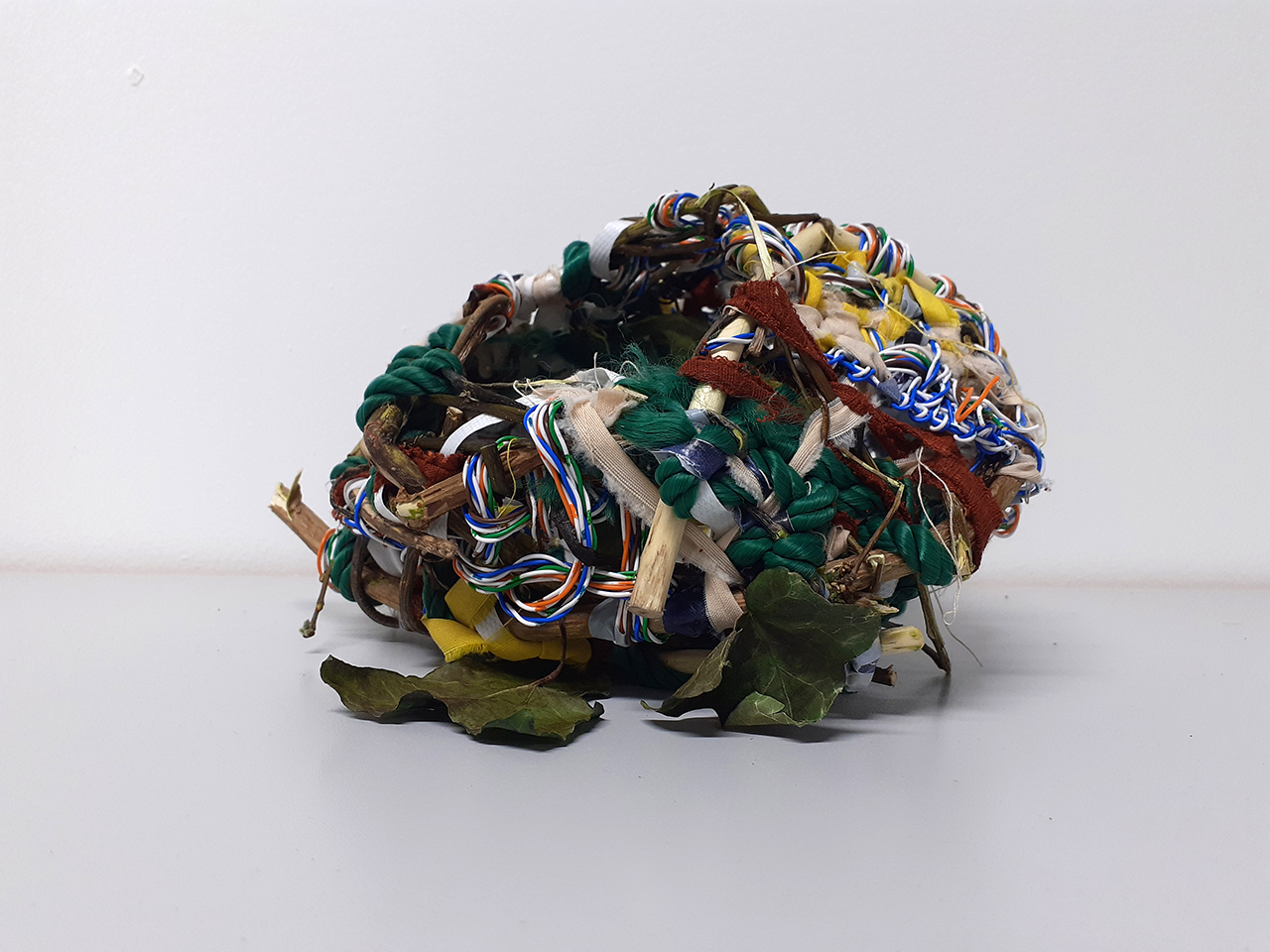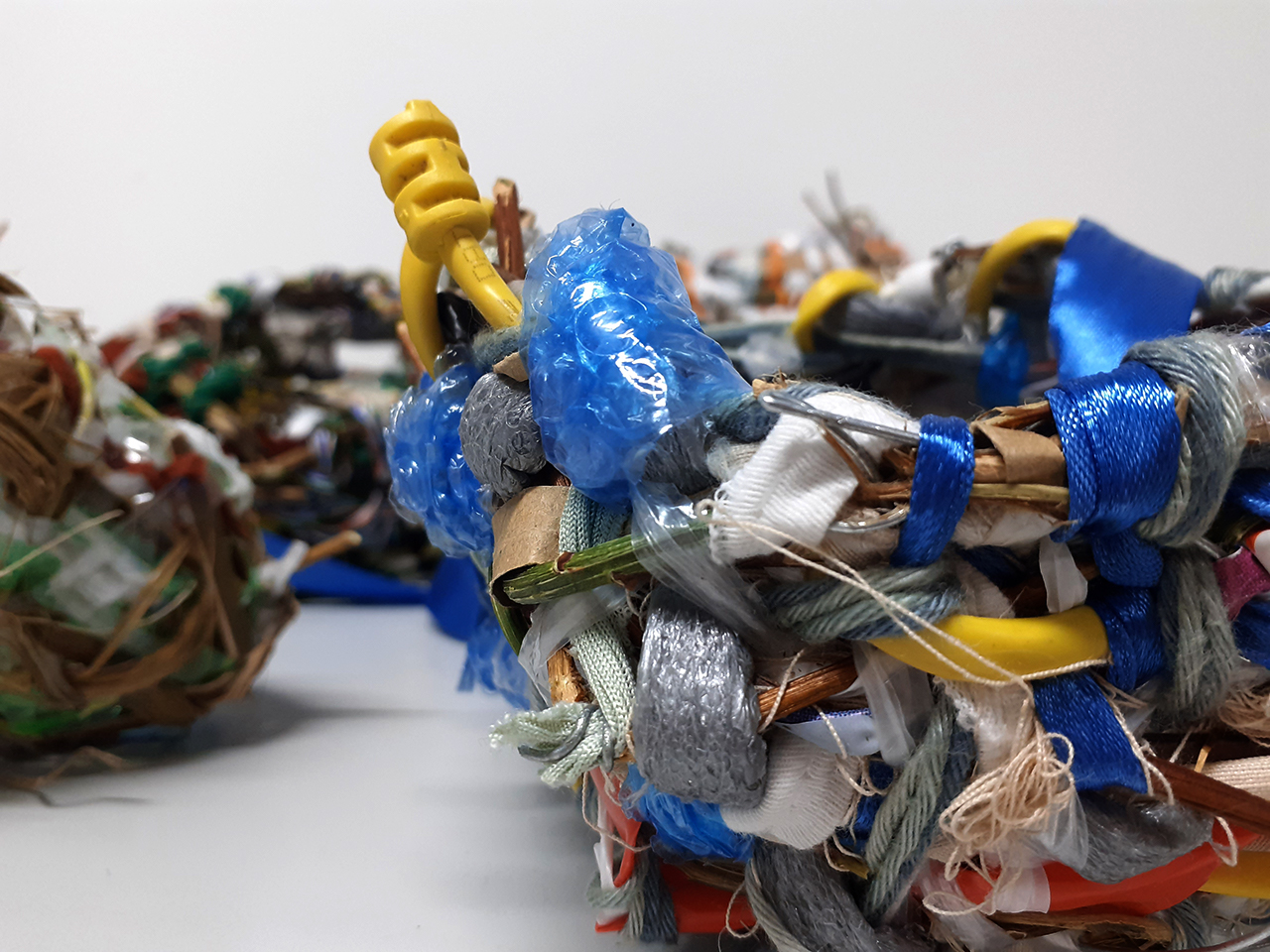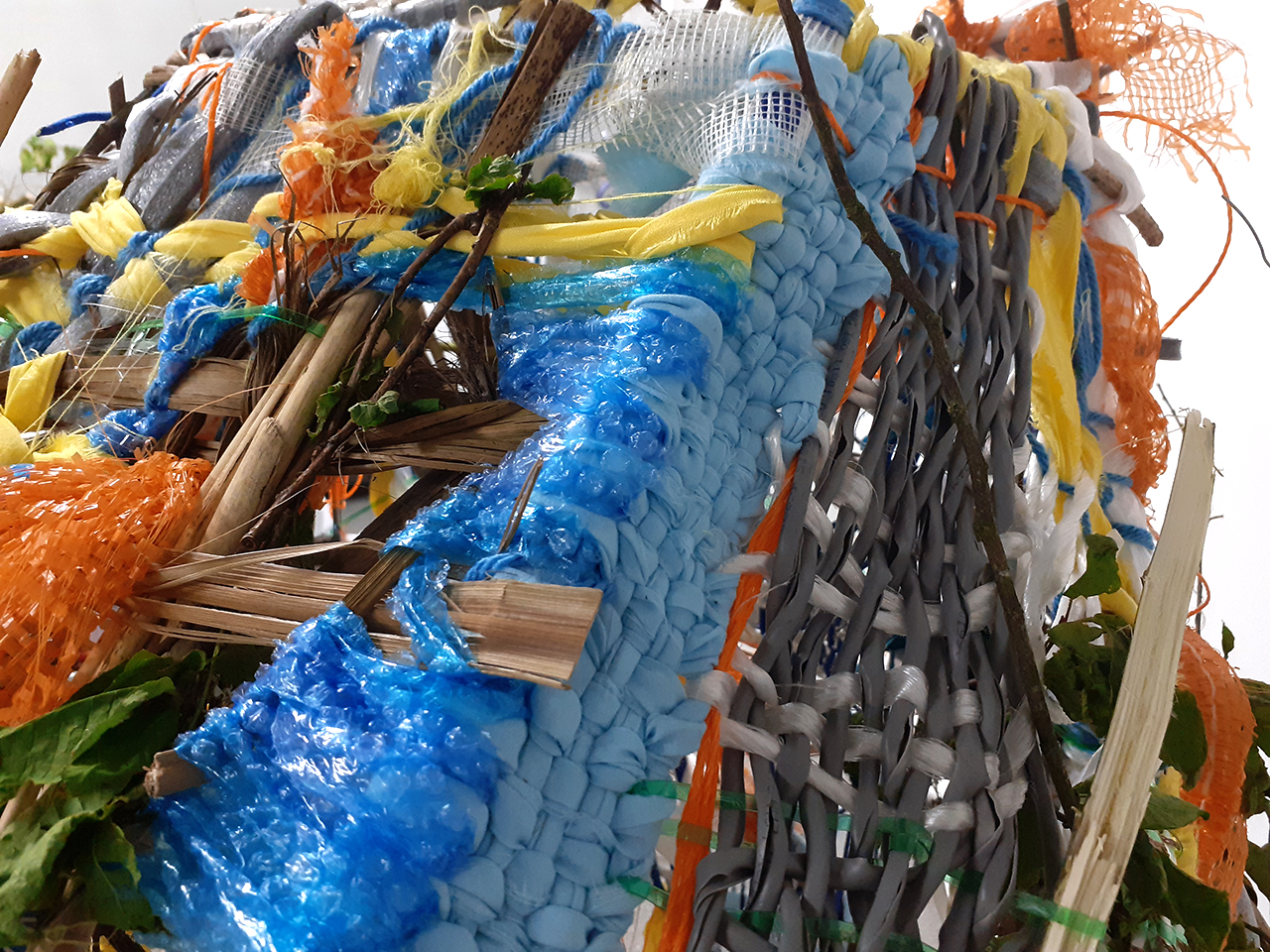Natasha Cully
I make woven sculptures that explore ideas of biomimicry, adaptability, self-sufficiency, and resourcefulness. I am interested in how humans inhabit the world and their relationships with materials. We take material from the Earth and process it, giving it a new form as an object or consumable item. Materially, we have become far less self-sufficient than in the past. Industrial processes and mass manufacturing have enabled the quick making of things that are replaced and discarded.
These sculptures were made by weaving together found or discarded materials; these include twigs, branches, stems, leaves, plastic bags, bottles and packaging, rope, electrical wire, newspaper, old clothes, clay, twine, paper, wool, and plastic pipe. By weaving these materials together, they intermingle and overlap, transforming dormant material into something new.
I am interested in how birds are increasingly using plastics and rubbish in their nests as they are often more readily available than organic matter. Biomimicry describes how humans emulate processes initially designed by nature. In my case, I am mimicking how birds build nests. They collect, gather and weave materials together, often what is most readily available to them. By emulating this intuitive process, I began working with the materials surrounding me while also manipulating and processing the materials into a woven sculpture.
The vessel form that these sculptures take corresponds to the shape of a bird’s nest or a woven basket. The blurring of lines between natural and human-made occurs through the form and the material used in these works. Traditionally, in Ireland, weaving was a craft of self-sufficiency and reliance on the land. Like the birds using what is most readily available to them to build their nests, people rely on their community and environment to craft objects for everyday use. The cheaper alternative that is a plastic means that the need for handwoven objects such as baskets has faded over time.






 Home
Information
Archive
Home
Information
Archive